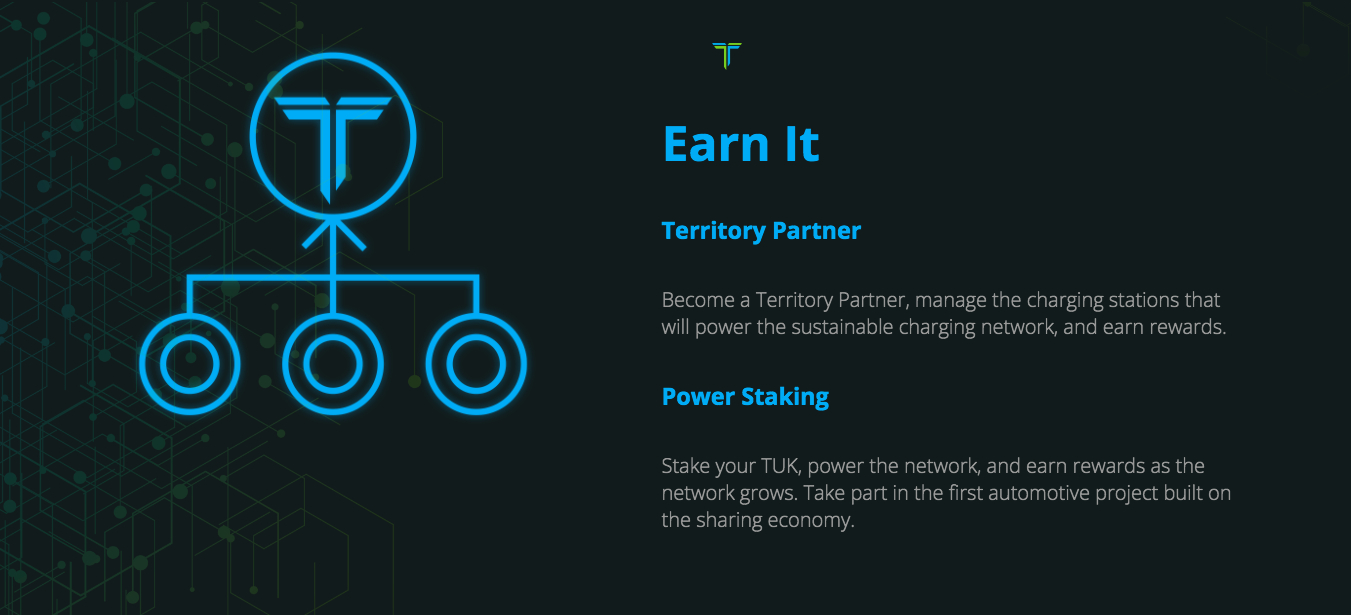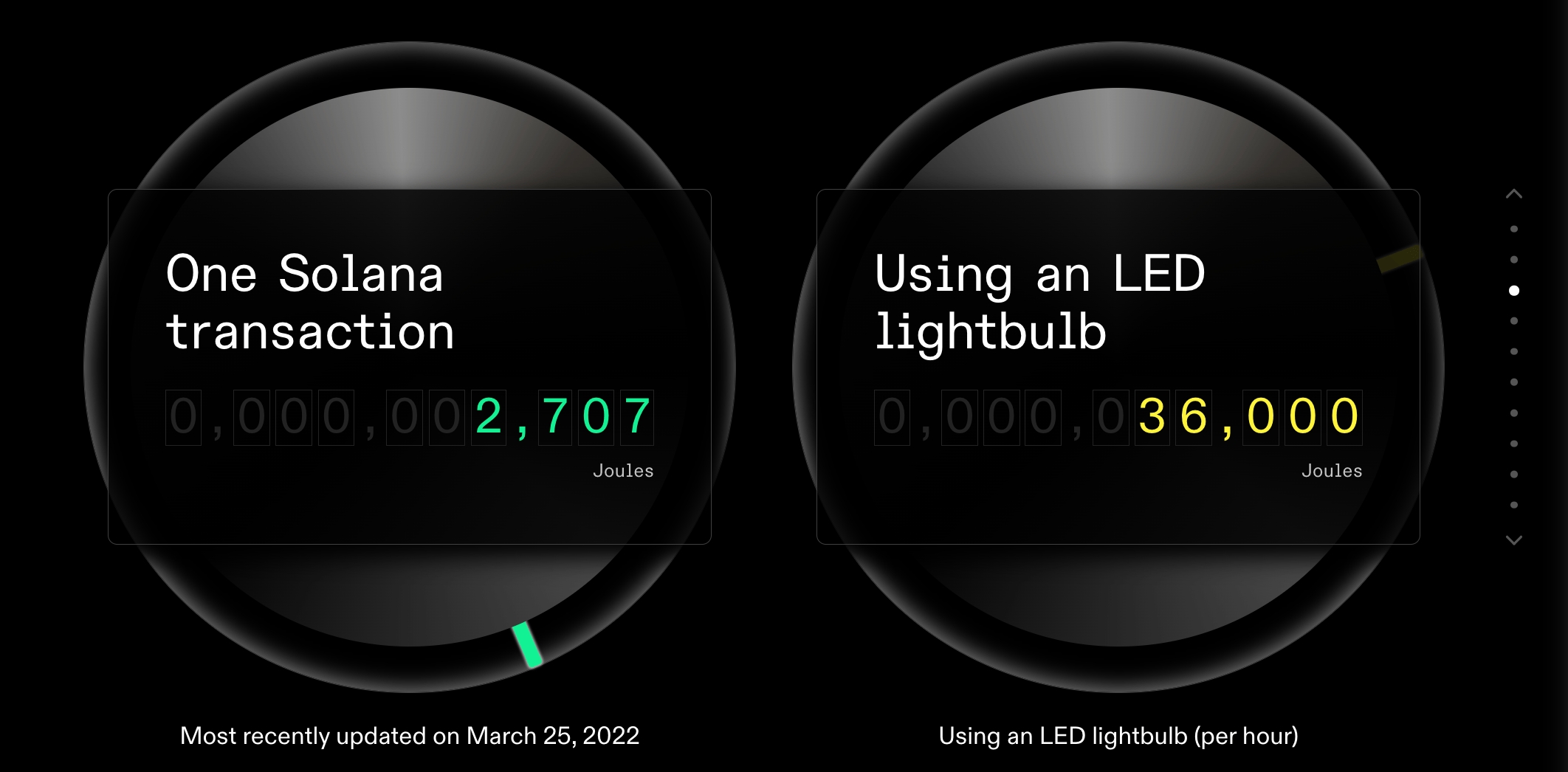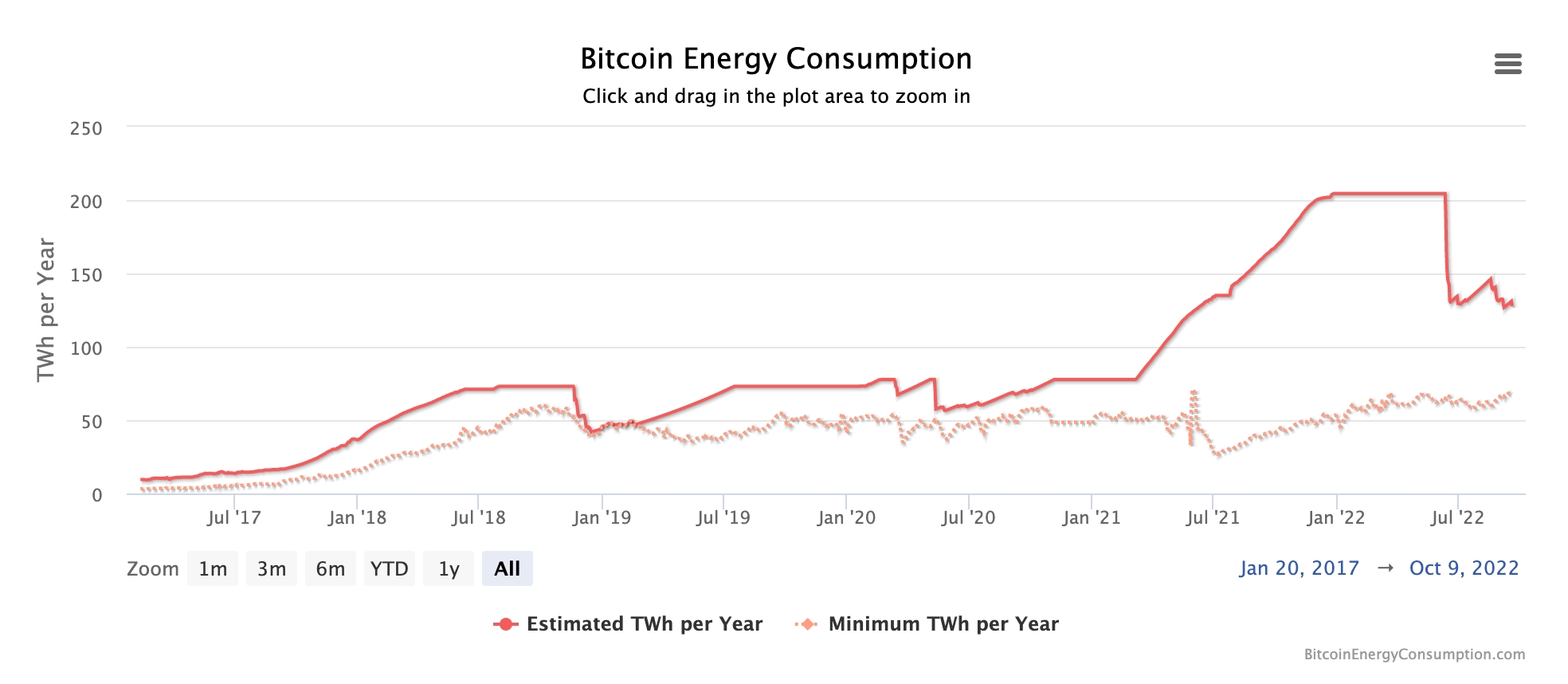The Most Energy-Efficient Cryptocurrency to Invest In – Top 11 Projects Reviewed

The crypto market’s reputation has undoubtedly been harmed by Bitcoin’s substantial energy requirements, resulting from the network’s Proof-of-Work (PoW) consensus protocol. However, many crypto projects now look to offer a more energy-efficient solution, making them more appealing to environmentally-conscious investors.
This guide discusses the most energy-efficient cryptocurrency projects on the market, diving into the technology that enables them to reduce their energy consumption drastically, before exploring why energy-efficient cryptos are so crucial in today’s world.
The Most Energy-Efficient Cryptocurrency – Top 11 Projects for 2024
When looking for the crypto with the most upside, investors may wish to consider projects with reduced energy consumption. This is because the most energy-efficient crypto projects often employ cutting-edge technology – a factor that helps them become ‘futureproof’.
With that in mind, listed below are 11 of the lowest energy cryptocurrency projects for 2024:
- Green Bitcoin (GBTC) – Most energy-efficient crypto offers 199% staking APYs.
- Bitcoin Minetrix (BTCMTX) – Stake-to-mine crypto offers 59% staking APYs.
- eTukTuk (TUK) – Sustainable crypto builds EV charging stations. $1.6M raised.
- Ethereum (ETH) – #2 cryptocurrency with a $44 billion market capitalization.
- Stellar (XLM) – Promising energy-efficient cryptocurrency for payment processing.
- Avalanche (AVAX) – Top crypto offers high scalability, $2 billion market cap.
- Solana (SOL) – Layer 2 cryptocurrency blockchain used by dApp Developers.
- Cardano (ADA) – Low-Energy blockchain with peer-reviewed technology.
- IOTA (MIOTA) – The crypto with the least energy consumption in the IoT niche.
- Hedera (HBAR) – A sustainable alternative to crypto blockchain networks.
- Tezos (XTZ) – Low-power blockchain with innovative ‘Liquid Proof-of-Stake’ protocol.
Cryptoassets are highly volatile and unregulated. No consumer protection. Tax on profits may apply.
A Detailed Look at the Most Energy Efficient Cryptos for 2024
The lowest energy crypto projects are located in various market niches, highlighting the growing need for eco-friendly technologies across the board. Even many of the best metaverse coins now focus on sustainability, which has become an essential consideration for many investors.
Let’s take a closer look at the safe energy crypto projects listed above, exploring how their technology helps limit their carbon footprint.
1. Green Bitcoin (GBTC) – Most Energy-Efficient Green Crypto Offers BTC Price Prediction Rewards and 199% Staking Yields
We have picked Green Bitcoin ($GBTC) as the most energy-efficient cryptocurrency to invest in right now. Green Bitcoin limits energy consumption by adopting the proof-of-stake (PoS) consensus. It is also 10,000 times more energy-conservative compared to Bitcoin.

With the $GBTC token, investors can earn high staking yields, engage in online price prediction games, and receive token bonuses. After purchasing $GBTC, you can stake your holdings on the Green Bitcoin smart contract and earn high staking yields. At present time, Green Bitcoin offers 199% APYs, with nearly 3 million tokens locked on the staking mechanism.
Staked token holders also get access to Green Bitcoin’s gamified green staking model. On this feature, players predict the daily price change of Bitcoin – either forecasting the price to increase or fall. You are rewarded daily with $GBTC tokens for successful predictions.
Depending on your staking time, you can also receive daily bonuses. For instance, Green Bitcoin offers 5% bonuses on top of your daily price prediction rewards if you have staked $GBTC for a week. The bonus increases to 15% for a six-month staking period.

Green Bitcoin has a 21 million token supply, similar to Bitcoin. Half the supply is allocated for the current presale. While the project has already raised more than $1.7 million, the hard cap target is set at over $7 million. $GBTC is currently priced at $0.6122 per token. Another 20% of the supply will be distributed through post-presale staking rewards.
Keep yourselves updated with this crypto project by reading the Green Bitcoin whitepaper and joining the Telegram channel.
| Presale Started | 6 Dec 2023 |
| Purchase Methods | ETH, USDT, BNB, Card |
| Chain | Ethereum |
| Min Investment | None |
| Max Investment | None |
2. Bitcoin Minetrix (BTCMTX) – A Toke Presale That Targets BTC Cloud Mining By Staking Your Tokens
Bitcoin Minetrix ($BTCMTX) is our next pick in terms of sustainability, with an eco-friendly Ethereum design to provide an alternative to the harmful model of Bitcoin mining.
Bitcoin mining is known for its use of environmentally damaging hardware machines known as ASICs. They are terrible for the environment, guzzle up electricity, and need fans to keep cool. The industry is dominated by mining companies with huge financial resources.

Bitcoin Minetrix is run over Ethereum, which is known to be much more efficient and environmentally friendly in comparison to Bitcoin’s Proof-Of-Work design. Users stake their BTCMTX, which in turn generates non transferable ERC20 mining credits. These are then burned in return for BTC. The more mining credits burned, the more that is earned in total.
It’s an eco-friendly and simple concept that could prove to be a perfect alternative to Bitcoin mining. Even existing cloud mining industries do not have the ease or low investment cost of Bitcoin Minetrix. All that is required is a $10 investment and a compatible Web3 wallet to connect with the presale, such as MetaMask or Wallet Connect.

At the time of writing, Bitcoin Minetrix is priced at $0.0137 per token. Since the presale started, it has raised over $11.4 million.
Investors should read the official Bitcoin Minetrix Whitepaper to understand all the details of this new stake-to-mine infrastructure.
The project socials (Twitter and Telegram) are useful to keep abreast of all developments.
| Presale Started | September 2023 |
| Purchase Methods | ETH, USDT, BNB |
| Chain | Ethereum |
| Min Investment | $10 |
| Max Investment | None |
3. eTukTuk (TUK) – Offering Energy-Efficient EVs That Help Increase Driver Earnings By 4x
eTukTuk, an energy-efficient crypto project based on the Binance Smart Chain blockchain, is paving the way toward a carbon-neutral future.
The project is driven by a desire to improve Sri Lanka’s conventional TukTuk vehicles. It integrates electric vehicles (EVs) with blockchain technology. This transformation, replacing high-emission vehicles with electric versions, is guided by eTukTuk’s mission of advancing safe, green transport.

According to the eTukTuk whitepaper, the EVs feature a unique roll cage design for safety and sustainability. Moreover, the platform’s native crypto, $TUK, is currently in the whitelisting phase, a critical milestone before it is available on exchanges.
An essential feature of eTukTuk’s strategy is establishing a comprehensive charging network across Sri Lanka. This plan ensures economical EV charging, resulting in lower operational costs for drivers. The Capital Maharaja Group, a key Sri Lankan corporation, backs this vision. Their partnership facilitates local production, further lowering expenses and boosting drivers’ income by 4x.
The platform also offers a new staking mechanism for its token owners. By allocating their tokens to power nodes, they can help in the functioning of charging stations and receive a yearly yield percentage (APY) from a staking pool, which increases as the transaction volume expands.

But eTukTuk’s ambition extends beyond ecological considerations. The platform seeks to increase financial inclusivity in developing nations.
By leveraging blockchains, they aim to promote digital identities, enabling cost-effective transactions and creating an inclusive space for all.
eTukTuk isn’t simply reinventing transportation; it’s aiming to redefine industry standards concerning climate adaptation and digital transition. Since the start of the presale, the cryptocurrency has raised more than $1.6 million. $TUK is currently priced at $0.2775 per token.
Stay updated with the project’s progress on the eTukTuk Telegram channel.
4. Ethereum (ETH) – Most Popular Energy-Efficient Cryptocurrency
Taking the next spot on our list of the most energy-efficient cryptocurrency projects is Ethereum. Most crypto investors will have heard of Ethereum, as it remains the second-largest cryptocurrency as measured by market cap (behind Bitcoin).
However, many believe Ethereum is actually more valuable than Bitcoin due to its many use cases and the huge number of projects that are built on the blockchain.

As a smart contract-enabled blockchain, Ethereum provides the foundation for decentralized app (dApp) developers to host their creations. This has led to massive innovation in various high-growth sectors, including NFTs, the metaverse, and decentralized finance (DeFi).
The recent Ethereum merge saw the network move to a Proof-of-Stake (PoS) consensus protocol. This removes the problems associated with crypto mining energy consumption since Ethereum’s blocks are now validated through staking. As a result, Ethereum’s energy requirements are now drastically lower than before.
To put this into context, a recent report by CNN notes that the network will now use around 99.95% less energy than when it used a Proof-of-Work (PoW) consensus mechanism. In turn, this reduced crypto energy consumption has driven Ethereum into the limelight, helping change people’s perceptions of the crypto market.
Overall, this energy-efficient crypto cryptocurrency tops our list due to its sheer size, making the team’s focus on sustainability even more impressive. Finally, given that Ethereum’s change to a PoS consensus protocol also makes the network much more scalable, this provides a solid foundation for further growth and the potential for ETH to become the greenest cryptocurrency on the market.
5. Stellar (XLM) – Promising Energy-Efficient Cryptocurrency for Payment Processing
Another environmentally energy-efficient cryptocurrency to be aware of is Stellar. Stellar remains one of the most-searched crypto projects globally due to its first-mover status. For those unaware, Stellar has made a name for itself in the payment processing space, attempting to revolutionize cross-border transactions.
Thanks to Stellar’s super-fast system, network users can send money anywhere, with transactions taking just five seconds to be processed. What’s more, these transactions cost just a fraction of a cent to complete – much cheaper than using the SWIFT network. Thanks to this innovative technology, Stellar has gone on to partner with leading institutions like IBM and MoneyGram.

Stellar can also be considered an energy-efficient cryptocurrency, as the network uses a unique ‘Proof-of-Agreement’ (PoA) consensus mechanism. According to the Stellar Foundation, the network consumes just 0.173 Wh of electricity per transaction. Moreover, nodes that help validate transactions only consume around 261,435 kWh of electricity annually.
In addition to its low-energy nature, Stellar has partnered with PricewaterhouseCoopers (PwC) to create a solid framework to accurately measure the network’s energy use. Thanks to this, Stellar can now establish a carbon dioxide removal (CDR) commitment, helping reduce the network’s carbon footprint.
6. Avalanche (AVAX) – Energy-Efficient Crypto with High Scalability
Avalanche is a super-fast blockchain network that emerged as a viable alternative to Ethereum in 2021. Instead of using just one chain, Avalanche adopts a ‘multi-chain’ approach, allowing it to increase its scalability significantly. To put this into context, Avalanche can handle 4,500 transactions per second (TPS), whilst Ethereum could previously only manage around 30 before ‘the Merge’.
Like many other energy-efficient cryptos, Avalanche uses a PoS mechanism to validate blocks. This makes AVAX one of the best proof-of-stake coins since transaction finality is achieved in less than two seconds. As a result, Avalanche has become a popular option for dApp developers and NFT creators looking for high scalability.

Interestingly, Avalanche is also an energy-efficient energy crypto backed by a recent report from the Crypto Carbon Ratings Institute (CCRI). This report found that the Avalanche blockchain uses just 0.0005% of the energy that the Bitcoin network does. It also uses just 0.0028% of Ethereum’s energy requirements – although this data was gathered before ‘the Merge’.
To put this into perspective, the total annual energy consumption of the Avalanche network equates to that of just 46 US households. This puts Avalanche in the third spot in the list of the most energy-efficient cryptocurrency projects, ahead of leading entities like Algorand and Cardano.
7. Solana (SOL) – Emerging Energy-Efficient Crypto for dApp Developers
Solana has long been considered one of the best altcoins on the market, rising to prominence in 2021 thanks to its high level of scalability. Much like Ethereum, Solana has full support for smart contracts, making the network a viable option for dApp developers.
However, Solana differentiates itself by using a hybrid consensus mechanism. This approach combines the benefits of Proof-of-Stake and ‘Proof-of-History’, which means the network can theoretically handle up to 65,000 transactions per second (TPS), with finality of just 2.5 seconds.

Interestingly, Solana’s unique approach also makes the network extremely energy-efficient. As noted on Solana’s website, one network transaction uses just 2,707 Joules of energy – which is less power than three Google searches. In addition, minting an NFT on the Solana network uses around three times less energy than having an LED lightbulb on for an hour.
The Solana Foundation has also pledged funds to aid refrigerant destruction, which has been shown to be one of the best ways to reduce carbon emissions. In turn, this meant the Solana network achieved carbon neutrality in 2021.
8. Cardano (ADA) – Low-Energy Blockchain with Peer-Reviewed Technology
Investors interested in the cryptos with the most potential may wish to consider Cardano. Cardano has been in the limelight over the past few years due to its systematic approach, which sees the development team rely heavily on peer-reviewed literature.
This approach, combined with the leadership of Ethereum co-founder Charles Hoskinson, has made Cardano an appealing option for dApp developers in various industries. Transactions on the Cardano network are validated using a PoS protocol called ‘Ouroboros’, which sees network participants stake their ADA tokens to receive block rewards.

This energy-efficient crypto mining alternative has made Cardano one of the most sustainable blockchains – so much so that the development team has even appointed a ‘Group Head of Sustainability’. Moreover, Cardano’s team also vets every single investment to ensure any pledged funds will make a positive real-world impact.
From an energy use perspective, Cardano uses a reported 48,851 kWh of electricity per year – which is less than that of five US households. Finally, Cardano’s team even places significant emphasis on carbon offsetting, opting to use a green energy supplier for the Rotterdam office and urging employees to take the train where possible.
9. IOTA (MIOTA) – The Crypto with the Least Energy Consumption in the IoT Niche
IOTA is a crypto with low energy consumption that aims to promote the idea of the Internet of Things (IoT). The IoT refers to the communication between different devices used in everyday life, ranging from TVs to smartphones and even refrigerators.
Many believe the concept of the IoT will become more evident in the years ahead, making IOTA one of the best long-term crypto projects to invest in. This is because IOTA helps facilitate transactions between devices using ‘The Tangle’ – a distributed ledger that does not rely on mining for validation.

Not only does this altogether remove transaction fees, but it also makes these transactions extremely energy-efficient. To put this into perspective, a recent blog post from IOTA’s team found that running the network’s underlying software for an entire year would mean node operators only consume around 0.000009% of what the Bitcoin network does.
This means IOTA’s annual node energy requirements are less than that of a typical German citizen’s – highlighting that this is a cryptocurrency that uses less energy than most. Moreover, IOTA’s team has placed significant focus on transparency, pledging to continue showing accurate energy consumption data for the network.
10. Hedera (HBAR) – Energy-Efficient Alternative to Blockchain Networks
Those looking for the crypto that uses the least energy may also wish to consider Hedera. Hedera occupies a unique position in the cryptocurrency market since this network doesn’t actually use blockchain technology. Instead, Hedera uses a unique ‘hashgraph’ consensus mechanism designed by co-founder Leemon Baird.
This ‘hashgraph’ technology is relatively complex, although it is claimed to be faster and more secure than blockchain-based systems. Due to this, Hedera is highly scalable and can handle around 10,000 TPS with finality of just a few seconds.

Hedera has also emerged as one of the top trending cryptos due to the development team’s focus on sustainability. This focus has resulted in Hedera becoming carbon negative thanks to the regular purchase of carbon offsets. Offset amounts are determined through Hedera’s partnership with Terrapass to ensure accuracy and transparency.
What’s more, Hedera is also extremely energy-efficient and can process the equivalent of 10,000,000 transactions for the same amount of energy it takes the Bitcoin network to process one. Due to its low cryptocurrency energy consumption, Hedera will likely become increasingly popular as the need for sustainable networks grows.
11. Tezos (XTZ) – Low-Power Blockchain with Innovative ‘Liquid Proof-of-Stake’ Protocol
Rounding off our list of the lowest energy crypto projects is Tezos. Tezos is often considered the best crypto by energy consumption due to its low carbon footprint, making the network appealing to dApp developers and NFT creators worldwide.
Tezos uses a ‘liquid Proof-of-Stake’ system to validate transactions, which is very similar to traditional PoS mechanisms, yet makes the validation process even more accessible. With this system, network participants can become ‘bakers’ if they hold more than 8,000 XTZ tokens or become delegators if they own less than this amount.

Each approach allows network participants to receive staking rewards, although the former obtains a higher percentage. In addition, this liquid PoS approach is extremely energy-efficient, consuming the same amount of energy per year as just 17 global citizens.
What’s more, Tezos’ technology will actually become more efficient as the network expands and transaction numbers increase, providing an incentive for environmentally-conscious dApp developers to get involved. Tezos has even partnered with PwC to assess the network’s carbon footprint, with the report freely available to all.
How Does a Cryptocurrency Become Energy Efficient?
Although Bitcoin BSC and Ethereum top our list of the lowest energy crypto projects, all of the networks listed in the previous section can be considered energy-efficient. But what does being energy-efficient actually mean? Let’s dive in and explore this question in more detail.
Many new cryptocurrency projects focus on sustainability to improve the crypto market’s reputation. This reputation has unfortunately been damaged by Bitcoin’s colossal energy requirements, which have caught the attention of the mainstream media. In a sense, this is understandable, considering the Bitcoin network consumes as much energy as a small country.

The reason for Bitcoin’s colossal energy requirements is the network’s Proof-of-Work (PoW) consensus mechanism, which relies on complex computing hardware to validate transactions. As the Bitcoin network has expanded, the need for more advanced equipment has also increased – leading to higher electricity requirements.
This is where the most energy-efficient crypto projects come in, as these projects offer an alternative to Bitcoin’s PoW consensus mechanism. The most common alternative is Proof-of-Stake (PoS), which completely eradicates the need for mining. As noted in a report by the FTSE Russell, PoS blockchains also offer yield opportunities, providing yet another benefit over PoW blockchains.

The result of using a PoS mechanism is that the associated network consumes much less electricity annually. Not only does this help repair the damage to the crypto market’s reputation, but it also reduces the carbon footprint of these networks. Given the rapid growth of the crypto market, the latter point will be crucial in the years ahead.
However, just because a blockchain uses a PoS consensus mechanism doesn’t mean it is entirely energy-efficient. There will always be energy requirements, which is why some blockchains, such as Solana, take additional measures to reduce (or remove) their carbon footprint. This trend is becoming more popular with low-energy cryptos, making these projects even more appealing to eco-conscious investors.
Why is Energy-Efficient Crypto So Important?
Many of the best altcoins now have a considerable focus on sustainability, enabling them to offer compelling use cases whilst remaining eco-friendly. But why are these energy-efficient cryptos considered so crucial in today’s world?
Let’s take a look at some of the most prominent reasons below:
Reduces Carbon Dioxide Emissions
Energy-efficient cryptocurrencies are crucial when it comes to reducing carbon dioxide emissions. According to Statista, energy-related carbon dioxide emissions reached 36.3 billion metric tons in 2021. For context, this was a 6% increase from the previous year.

However, the rise of energy-efficient cryptos can help reduce these CO2 emissions, as they make energy-intensive networks less popular. In addition, as sustainable cryptocurrencies become ‘the norm’, this will naturally make other industries sit up and take notice – prompting them to take action.
Provides an Option for Environmentally-Conscious Investors
The lowest-energy cryptocurrency projects also provide an option for environmentally-conscious investors. When Bitcoin was the ‘go-to’ in the market, this demographic of investors had their hands tied, meaning many had to sit on the sidelines.
This is no longer an issue, as there are now dozens of crypto projects that utilize energy-efficient technology. Additionally, as more capital flows to sustainable projects, less money will flow to energy-intensive projects, increasing the positive effects on the environment.
Helps Improve the Crypto Market’s Reputation
As touched on earlier, the growth of energy-efficient cryptos has had a hugely positive impact on the broader market’s reputation. Many of the fastest-growing cryptocurrency projects have raised awareness of the market’s changing nature – and leading media outlets are beginning to take notice.

As the perception of the crypto market swings positive, this will naturally make cryptocurrencies a more attractive prospect for different investor demographics. In turn, as more capital flows into the market, energy-efficient crypto projects will have more significant resources to boost their sustainability agendas.
Promotes Technological Innovation
Finally, energy-efficient cryptocurrency projects are also vital for promoting technological innovation. This is clearly evidenced by the dramatic shift away from PoW consensus mechanisms, meaning that the likes of Bitcoin, Dogecoin, and Litecoin are being left behind.
In addition, due to the competitive nature of the crypto market, energy-efficient networks will be vying for the top spot regarding their positive environmental impact. This ‘race to the top’ provides a solid platform for innovation, which will undoubtedly have a positive effect on the environment as a whole.
How to Identify Energy-Efficient Cryptocurrencies
Investors looking for the best crypto to buy Reddit may wish to consider energy-efficient cryptocurrencies since they often use technology that reduces the chance of them becoming obsolete in the short term. With that in mind, detailed below are some of the best ways that investors can identify these cryptocurrencies:
Review the Underlying Technology
The easiest way to identify whether a cryptocurrency is energy-efficient is to review its technology. As noted throughout this article, environmentally-conscious investors should avoid PoW chains as this mechanism requires a tremendous amount of electricity. On the other hand, these investors may wish to consider PoS chains, which require far less electricity.
However, there are also technological innovations that ‘improve’ PoS mechanisms even further. For example, Solana uses a ‘hybrid’ system that incorporates Proof-of-Stake and ‘Proof-of-History’ elements. By looking for projects that focus on similar innovations, investors can easily identify which cryptos are doing their best to be energy-efficient.
Evaluate the Development Team
When looking for the best crypto to buy for energy efficiency, investors may also wish to evaluate the development team behind a potential project. Lead developers can easily be found on sites like LinkedIn, allowing investors to gain insight into their values and ambitions.

If one (or more) of the lead developers has a clear focus on sustainability, there’s a good chance that they will be looking to ensure the project is as energy-efficient as possible. In addition, some projects (e.g. Cardano) even have roles that specifically focus on the project’s carbon footprint.
Consider the Project’s Whitepaper & Roadmap
A project’s whitepaper and roadmap are two crucial elements to consider before investing. However, they are just as important for investors looking to determine a project’s sustainability, as both should detail the project’s impact on the environment.
The whitepaper is especially important for this, as it will showcase the technology underpinning the project, allowing investors to determine whether it can be considered energy-efficient relative to similar projects. If a project’s whitepaper doesn’t mention its environmental impact whatsoever, then there’s a good chance that energy efficiency isn’t one of its top priorities.
Keep Tabs on Eco-Friendly Partnerships
Finally, investors can also uncover energy-efficient projects by looking out for partnership announcements in the crypto sector. When a project partners with a leading environmentally-conscious institution, it’s fair to say that sustainability is likely one of the development team’s core values.

An example is Solana’s partnership with Watershed – a company that aims to help other companies reduce their carbon footprint. Through this partnership, Solana will be funding the destruction of refrigerants, which has been shown to have an immediate impact on reducing CO2 emissions.
The Most Energy-Efficient Cryptocurrency to Invest In – Conclusion
In summary, this article has taken an in-depth look at the most energy-efficient cryptocurrency projects on the market, diving into how they work and the ways in which their technology helps reduce energy consumption.
Our top pick for the most energy-efficient crypto project is Green Bitcoin, which offers a high staking yield while using the eco-friendly Proof-of-Stake system. The platform has raised over $1.7 million since the start of the presale. $GBTC token holders can also take part in BTC price prediction games and win daily rewards.
FAQs
Which cryptocurrencies are energy-efficient?
All of the cryptocurrencies listed in this article are considered ‘energy-efficient’ due to their eco-friendly consensus protocols. Green Bitcoin is our top pick, as it uses a green PoS Ethereum blockchain instead of a harmful Bitcoin PoW blockchain.
What crypto uses the least energy?
Blockchain networks like Tezos, Avalanche, and Solana have all been found to use the lowest amounts of energy per year, thanks to their PoS consensus protocols. However, many other blockchains make up for their slightly-higher energy requirements by offsetting emissions through purchasing carbon offsets or powering their offices using green energy sources.




